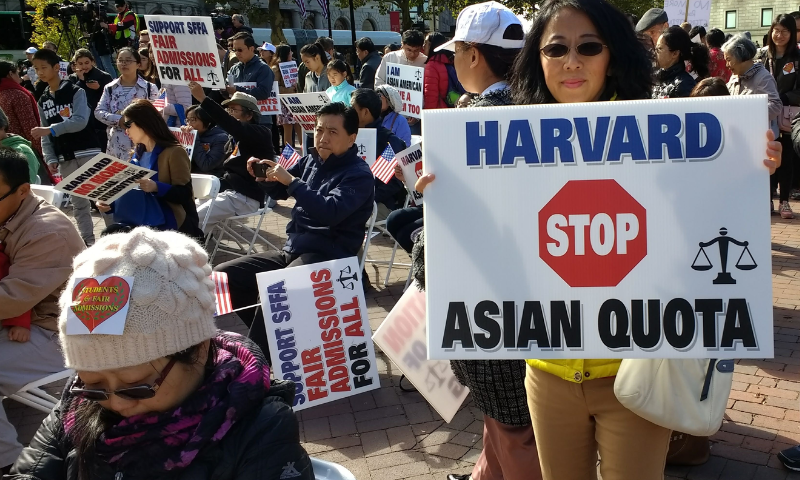Ruth R. Wisse
Mosaic Magazine, Nov. 14, 2022
“… discrimination against Jews in the past and against Asians in the present comes from two different political directions.”
A pair of cases now before the Supreme Court arise out of lawsuits brought by Students for Fair Admissions (SFFA), an organization of Asian American students and parents. The suits—a bold attempt to reverse a blatant experiment in social engineering—charge Harvard College, a private institution, and the University of North Carolina, a public institution, of lowering the bar of admittance for certain favored racial and ethnic groups while raising it for others, thereby openly violating the deliberate wording and explicit intent of the 1964 Civil Rights Act. In the same vein, the two lawsuits also ask the court to overturn its 2003 decision in Grutter v. Bollinger; in that case, the justices carved out an exception allowing just such discriminatory practices if undertaken in pursuit of the (alleged) “educational benefits that flow from a diverse student body.”
A ruling against the two schools would be very welcome, and we owe a great debt to the plaintiffs whose devotion to this country and its laws has carried them through long years of struggle to arrive at this point. True enough, most Americans, in an increasingly pinched bread-and-butter economy, have more things to worry about (inflation, crime, health care, abortion for and against) than what might seem like “a high-class problem.” Even citizens worried about our educational institutions tend to have in mind the years of compulsory schooling rather than college and beyond. They might reason that the students for whose sake the lawsuits have been brought are likely to prosper irrespective of the outcome, so what if some of the brainier among them, disfavored by today’s rigged quotas, have to settle for less prestigious schools?
But what happens at Harvard doesn’t stay at Harvard—as American Jews in particular know from their own experience, having once been excluded by quotas when they were the applicants armed with disproportionately higher grades, better intellectual training, and stronger family pressure to succeed. In fact, the authors of the present lawsuit open by drawing an analogy between the effort in the 1920s to limit the number of Jews entering Harvard and the current policy limiting the number of Asians, who are today’s highest-performing academic group.
In the light of that resemblance, one might have expected today’s American Jews to join the Asian-American students and their parents against a policy so clearly and unlawfully prejudicial to them. And some Jews did. For instance, the Louis D. Brandeis Center for Human Rights Under Law (LDB) joined with the Silicon Valley Chinese Association Foundation in an amicus brief supporting the plaintiffs. The brief argues that just as Harvard used methods in the 1920s and 1930s to identify applicants of sufficient “character and fitness” as a pretext to discriminate against Jews, Harvard’s current use of [an applicant’s] “personal rating” to pursue student-body diversity is a pretext to discriminate against Asian Americans. …SOURCE


